#19 June 1886
Photo
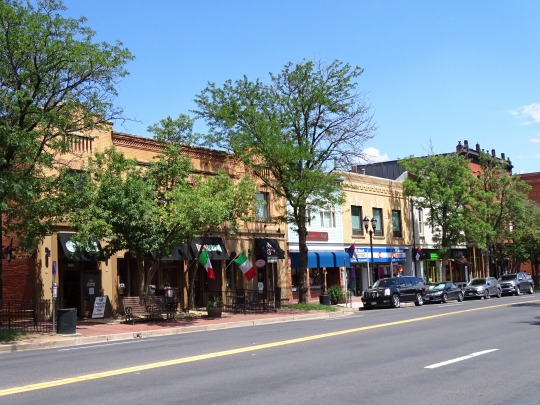


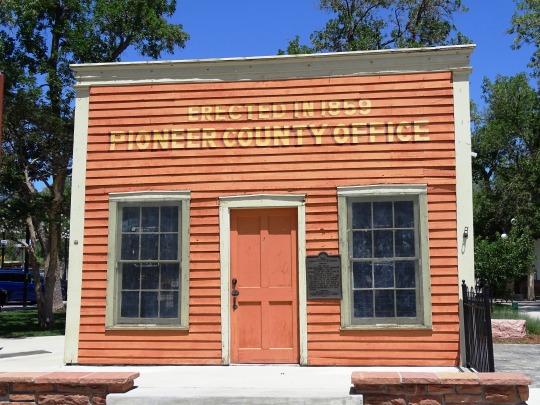
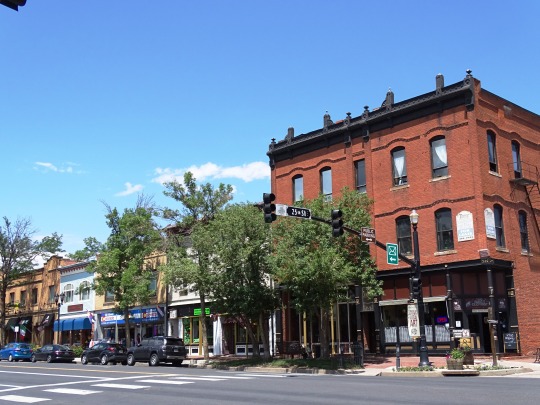


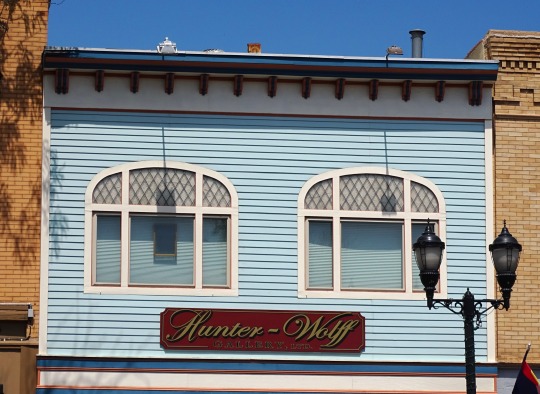
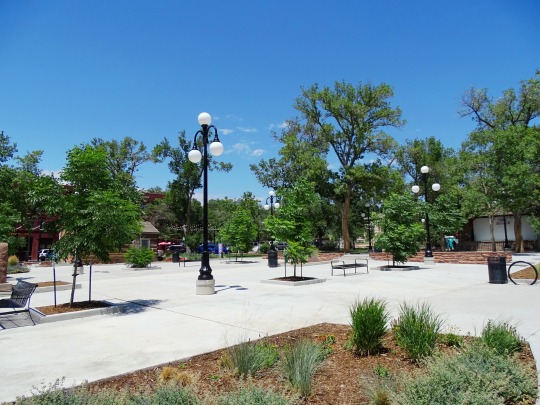

Colorado Springs was incorporated on June 19, 1886.
#Old Colorado City#Colorado Springs#incorporated#19 June 1886#USA#anniversary#US history#street scene#Former El Paso County courthouse#Old Colorado City Branch Carnegie Library#Bancroft Park#architecture#travel#cityscape#tourist attraction#landmark#original photography#nature#historic district#Mountain West Region#Colorado#summer 2022#tree#street light
3 notes
·
View notes
Text
Today the Church remembers the 108 Blessed Polish Martyrs.
Orate pro nobis.
The 108 Blessed Polish Martyrs were Roman Catholic Christians in Poland killed during World War II by the Nazis, either in the concentration camps or by mass slaughter on the streets. The group comprises 3 bishops, 79 priests, 7 male religious, 8 female religious, and 11 lay people. There are two parishes named for the 108 Martyrs of World War II in Powiercie in Koło County, and in Malbork, Poland.
The 108 Blessed Martyrs were beatified on 13 June 1999 by Pope John Paul II in Warsaw, Poland.
List of Martyrs
Bishops
1. Antoni Julian Nowowiejski (1858–1941 KL Soldau), bishop
2. Leon Wetmański (1886–1941 KL Soldau), bishop
3. Władysław Goral (1898–1945 KL Sachsenhausen), bishop
Priests
1. Adam Bargielski, priest from Myszyniec (1903–1942 KZ Dachau)
2. Aleksy Sobaszek, priest (1895–1942 KL Dachau)
3. Alfons Maria Mazurek, Carmelite friar, prior, priest (1891–1944, shot by the Gestapo)
4. Alojzy Liguda, Society of the Divine Word, priest (1898–1942 KL Dachau)
5. Anastazy Jakub Pankiewicz, Franciscan friar, priest (1882–1942 KL Dachau)
6. Anicet Kopliński, Capuchin friar, priest in Warsaw (1875–1941)
7. Antoni Beszta-Borowski, priest, dean of Bielsk Podlaski (1880–1943, shot near Bielsk Podlaski)
8. Antoni Leszczewicz, Marian Father, priest (1890–1943, burnt to death in Rosica, Belarus)
9. Antoni Rewera, priest, dean of the Cathedral Chapter in Sandomierz (1869–1942 KL Dachau)
10. Antoni Świadek, priest from Bydgoszcz (1909–1945 KL Dachau)
11. Antoni Zawistowski, priest (1882–1942 KL Dachau)
12. Bolesław Strzelecki, priest (1896–1941 KL Auschwitz)
13. Bronisław Komorowski, priest (1889–22 March 1940 KL Stutthof)
14. Dominik Jędrzejewski, priest (1886–1942 KL Dachau)
15. Edward Detkens, priest (1885–1942 KL Dachau)
16. Edward Grzymała, priest (1906–1942 KL Dachau)
17. Emil Szramek, priest (1887–1942 KL Dachau)
18. Fidelis Chojnacki, Capuchin friar, priest (1906–1942, KL Dachau)
19. Florian Stępniak, Capuchin friar, priest (1912–1942 KL Dachau)
20. Franciszek Dachtera, priest (1910–23 August 1942 KL Dachau)
21. Franciszek Drzewiecki, Orionine Father, priest (1908–1942 KL Dachau); from Zduny, he was condemned to heavy work in the plantation of Dachau. While he was bending over tilling the soil, he adored the consecrated hosts kept in a small box in front of him. While he was going to the gas chamber, he encouraged his companions, saying "We offer our life for God, for the Church and for our Country".
22. Franciszek Rogaczewski, priest from Gdańsk (1892–1940, shot in Stutthof or in Piaśnica, Pomerania)
23. Franciszek Rosłaniec, priest (1889–1942 KL Dachau)
24. Henryk Hlebowicz, priest (1904–1941, shot at Borisov in Belarus)
25. Henryk Kaczorowski, priest from Włocławek (1888–1942)
26. Henryk Krzysztofik, religious priest (1908–1942 KL Dachau)
27. Hilary Paweł Januszewski, religious priest (1907–1945 KL Dachau)
28. Jan Antonin Bajewski, Conventual Franciscan friar, priest (1915–1941 KL Auschwitz); of Niepokalanow. These were the closest collaborators of St Maximilian Kolbe in the fight for God's cause and together suffered and helped each other spiritually in their offering their lives at Auschwitz
29. Jan Franciszek Czartoryski, Dominican friar, priest (1897–1944)
30. Jan Nepomucen Chrzan, priest (1885–1942 KL Dachau)
31. Jerzy Kaszyra, Marian Father, priest (1910–1943, burnt to death in Rosica, Belarus)
32. Józef Achilles Puchała, Franciscan friar, priest (1911–1943, killed near Iwieniec, Belarus)
33. Józef Cebula, Missionary Oblate, priest (23 March 1902 – 9 May 1941 KL Mauthausen)[
34. Józef Czempiel, priest (1883–1942 KL Mauthausen)
35. Józef Innocenty Guz, Franciscan friar, priest (1890–1940 KL Sachsenhausen)
36. Józef Jankowski, Pallotine, priest (1910 born in Czyczkowy near Brusy, Kashubia (died 16 October 1941 in KL Auschwitz beaten by a kapo)
37. Józef Kowalski, Salesian, priest (1911–1942) , priest beaten to death on 3 July 1942 in the KL Auschwitz concentration camp
38. Józef Kurzawa, priest (1910–1940)
39. Józef Kut, priest (1905–1942 KL Dachau)
40. Józef Pawłowski, priest (1890–9 January 1942 KL Dachau)
41. Józef Stanek, Pallottine, priest (1916–23 September 1944, murdered in Warsaw)
42. Józef Straszewski, priest (1885–1942 KL Dachau)
43. Karol Herman Stępień, Franciscan friar, priest (1910–1943, killed near Iwieniec, Belarus)
44. Kazimierz Gostyński, priest (1884–1942 KL Dachau)
45. Kazimierz Grelewski, priest (1907–1942 KL Dachau)
46. Kazimierz Sykulski, priest (1882–1942 KL Auschwitz)
47. Krystyn Gondek, Franciscan friar, priest (1909–1942 KL Dachau)
48. Leon Nowakowski, priest (1913–1939)
49. Ludwik Mzyk, Society of the Divine Word, priest (1905–1940)
50. Ludwik Pius Bartosik, Conventual Franciscan friar, priest (1909–1941 KL Auschwitz); of Niepokalanow. These were the closest collaborators of St Maximilian Kolbe in the fight for God's cause and together suffered and helped each other spiritually in their offering their lives at Auschwitz
51. Ludwik Roch Gietyngier, priest from Częstochowa (1904–1941 KL Dachau)
52. Maksymilian Binkiewicz, priest (1913–24 July 1942, beaten, died in KL Dachau)
53. Marian Gorecki, priest (1903–22 March 1940 KL Stutthof)
54. Marian Konopiński, Capuchin friar, priest (1907–1 January 1943 KL Dachau)
55. Marian Skrzypczak, priest (1909–1939 shot in Plonkowo)
56. Michał Oziębłowski, priest (1900–1942 KL Dachau)
57. Michał Piaszczyński, priest (1885–1940 KL Sachsenhausen)
58. Michał Woźniak, priest (1875–1942 KL Dachau)
59. Mieczysław Bohatkiewicz, priest (1904–4 March 1942, shot in Berezwecz)
60. Narcyz Putz, priest (1877–1942 KL Dachau)
61. Narcyz Turchan, priest (1879–1942 KL Dachau)
62. Piotr Edward Dankowski, priest (1908–3 April 1942 KL Auschwitz)
63. Roman Archutowski, priest (1882–1943 KL Majdanek)
64. Roman Sitko, priest (1880–1942 KL Auschwitz)
65. Stanisław Kubista, Society of the Divine Word, priest (1898–1940 KL Sachsenhausen)
66. Stanisław Kubski, priest (1876–1942, prisoner in KL Dachau, killed in Hartheim near Linz)
67. Stanisław Mysakowski, priest (1896–1942 KL Dachau)
68. Stanisław Pyrtek, priest (1913–4 March 1942, shot in Berezwecz)
69. Stefan Grelewski, priest (1899–1941 KL Dachau)
70. Wincenty Matuszewski, priest (1869–1940)
71. Władysław Błądziński, Michaelite, priest (1908–1944, KL Gross-Rosen)
72. Władysław Demski, priest (1884–28 May 1940, KL Sachsenhausen)
73. Władysław Maćkowiak, priest (1910–4 March 1942 shot in Berezwecz)
74. Władysław Mączkowski, priest (1911–20 August 1942 KL Dachau)
75. Władysław Miegoń, priest, commander lieutenant (1892–1942 KL Dachau)
76. Włodzimierz Laskowski, priest (1886–1940 KL Gusen)
77. Wojciech Nierychlewski, religious, priest (1903–1942, KL Auschwitz)
78. Zygmunt Pisarski, priest (1902–1943)
79. Zygmunt Sajna, priest (1897–1940, shot at Palmiry, near Warsaw)
Religious brothers
1. Brunon Zembol, friar (1905–1942 KL Dachau)
2. Grzegorz Bolesław Frąckowiak, Society of the Divine Word friar (1911–1943, guillotined in Dresden)
3. Józef Zapłata, friar (1904–1945 KL Dachau)
4. Marcin Oprządek, friar (1884–1942 KL Dachau)
5. Piotr Bonifacy Żukowski, friar (1913–1942 KL Auschwitz)
6. Stanisław Tymoteusz Trojanowski, friar (1908–1942 KL Auschwitz)
7. Symforian Ducki, friar (1888–1942 KL Auschwitz)
Nuns and religious sisters
1. Alicja Maria Jadwiga Kotowska, sister, based on eye-witness reports comforted and huddled with Jewish children before she and the children were executed (1899–1939, executed at Piaśnica, Pomerania)
2. Ewa Noiszewska, sister (1885–1942, executed at Góra Pietrelewicka near Slonim, Belarus)
3. Julia Rodzińska, Dominican sister (1899–20 February 1945, KL Stutthof); she died having contracted typhoid serving the Jewish women prisoners in a hut for which she had volunteered.
4. Katarzyna Celestyna Faron (1913–1944, KL Auschwitz); (1913–1944), had offered her life for the conversion of an Old Catholic bishop Władysław Faron (no relation). She was arrested by the Gestapo and condemned to Auschwitz camp. She put up heroically with all the abuses of the camp and died on Easter Sunday 1944. The bishop later returned to the Catholic Church).
5. Maria Antonina Kratochwil, SSND nun (1881–1942) died as a result of the torture she endured while imprisoned in Stanisławów.
6. Maria Klemensa Staszewska (1890–1943 KL Auschwitz)
7. Marta Wołowska (1879–1942, executed at Góra Pietrelewicka near Slonim, Belarus)
8. Mieczysława Kowalska, sister (1902–1941, Soldau concentration camp in Działdowo)
Roman Catholic laity
1. Bronisław Kostkowski, alumnus (1915–1942 KL Dachau)
2. Czesław Jóźwiak (1919–1942, guillotined in a prison in Dresden)
3. Edward Kaźmierski (1919–1942, guillotined in a prison in Dresden)
4. Edward Klinik (1919–1942, guillotined in a prison in Dresden)
5. Franciszek Kęsy (1920–1942, guillotined in a prison in Dresden)
6. Franciszek Stryjas (1882–31 July 1944, Kalisz prison)
7. Jarogniew Wojciechowski (1922–1942, guillotined in a prison in Dresden)
8. Marianna Biernacka (1888–13 July 1943), executed instead of her pregnant daughter-in-law Anna, offered her life for her and her unborn grandchild)
9. Natalia Tułasiewicz (1906–31 March 1945, died in KL Ravensbrück)
10. Stanisław Starowieyski (1895–1941 in KL Dachau)
11. Tadeusz Dulny, alumnus (1914–1942 KL Dachau)
Almighty God, by whose grace and power your Holy Martyrs of Poland triumphed over suffering and were faithful even to death: Grant us, who now remember them in thanksgiving, to be so faithful in our witness to you in this world, that we may receive with them the crown of life; through Jesus Christ our Lord, who lives and reigns with you and the Holy Spirit, one God, forever and ever. Amen.
(Fr. Józef Kowalski, priest beaten to death on 3 July 1942 in the KL Auschwitz concentration camp)
(Sr. Alicja Jadwiga Kotowska, a nun killed protecting a group of Jewish children in 1939 in the mass murders in Piaśnica)

#father troy beecham#christianity#jesus#saints#god#salvation#peace#martyrs#faith#christian persecution
39 notes
·
View notes
Text
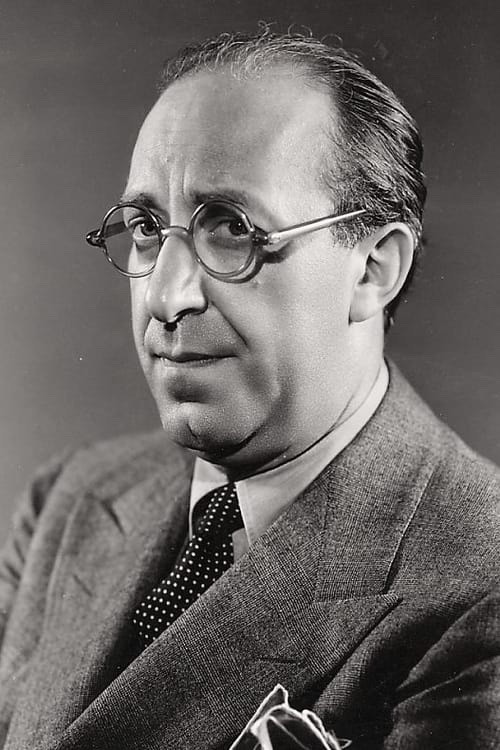
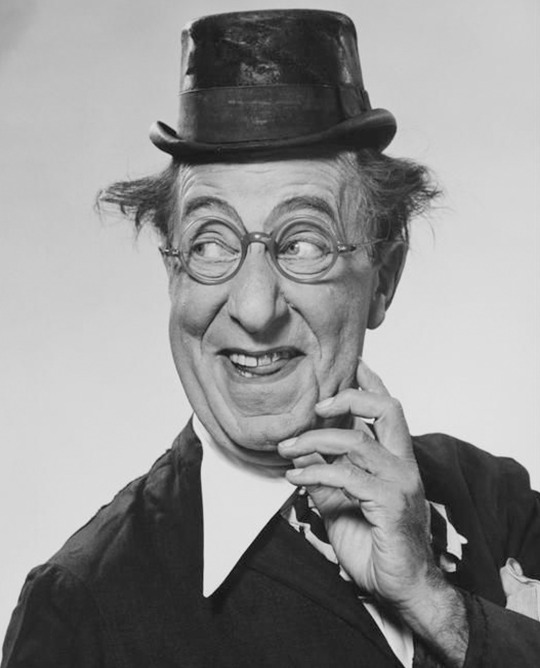
Ed Wynn (November 9, 1886 – June 19, 1966)
21 notes
·
View notes
Text
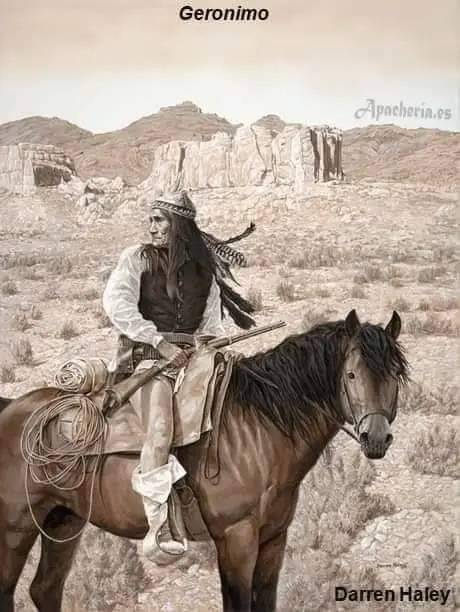
THE CHIRICAHUA APACHE NANTAN, GOYATLE (GERONIMO) IN WAR CAP :
Bedonkohe ...
Geronimo was born in what is today Arizona in the upper Gila River country on June 16, 1829. His birth name was Goyahkla, or "one who yawns." He was part of the Bedonkohe subsection of the Chiricahua tribe of Apaches, a small but mighty group of around 8,000 people ...
Apache nantans led from the front, so he might just be checking up on the column behind him. Many Apaches think he caused unnecessary decimation of the Chiricahua people; that he remained in the field too long, causing avoidable deaths. This nantan was blinded by revenge on the Mexicans. Full disclosure: he came home from what would pass for a shopping trip one day in 1851, and found his entire camp slaughtered by Mexican troops from Janos, Mexico. The dead included his mother Juana, wife Alope, and their three infant daughters. That Empire State Building sized horror, fell on one man all on the same day. So, you be the judge.
By 1884, he was in a bind. It became very difficult to recruit warriors from the reservations, as was the custom in earlier years. He even found himself competing with the US Cavalry for Apache men. The Army offered adult males jobs as scouts. Every scout was a warrior, but not every warrior became scouts. Those Army scouts were the albatross around his neck. They knew everything about him, the tribe and its refuges on both sides of the border. Every water hole, hiding place, arms cache, cave warehouses etc., were known to them. They would destroy winter stores piled up from summer operations in Mexico and Arizona/New Mexico. They essentially broke his back. By 1886, the pickings reached an all time low. He boiled down to 19 warriors; even resorted to child warriors. There were no bargaining chips left on the table from the 1884 talks. Geronimo was painted into a corner marked "unconditional surrender" ... When he finally handed over his rifle to General miles in September of 1886, there were only 38 people left in his band; half of them warriors. Deportation to Oklahoma, and what turned out to be a life sentence for him followed ...
The Chiricahuas served 27 years of incarceration 💔, before being released in 1913. It remains the longest confinement in US Military history ...
RIP Nantan Goyatle.
13 notes
·
View notes
Text

Ed Wynn (November 9, 1886 - June 19, 1966) with Lucille Ball (August 6, 1911 - April 26, 1989),
4 notes
·
View notes
Text
SAINTS OF THE DAY (May 4)
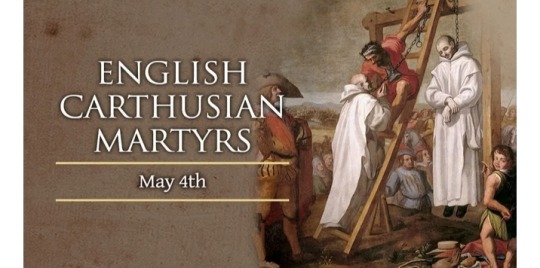
The Carthusian Martyrs of London were the monks of the London Charterhouse, the monastery of the Carthusian Order in the city of London who were put to death by the English state.
The method of execution was hanging, disembowelling while still alive, and quartering. Others were imprisoned and left to starve to death.
These 18 Carthusian monks were put to death in England under King Henry VIII between 1535-1540 for maintaining their allegiance to the Pope.
The Carthusians, founded by St. Bruno in 1054, are the strictest and most austere monastic order in the western Church.
They live an austere hermitic life, their ‘monastery’ actually being a number of hermitages built next to each other.
When Henry VIII issued his “Act of Supremacy” declaring that all who refused to take an oath recognizing him as head of the Church of England committed an act of high treason, these 18 Carthusians refused and were sentenced to death.
The first to die were the Carthusian prior of London, John Houghton, and two of his brothers, Robert Lawrence and Augustine Webster, who were hanged, drawn and quartered, on 4 May 1535.
The prior is said to have declared his fidelity to the Catholic Church and forgiven his executioners before dying.
The Carthusians were the first martyrs to die under the reign of Henry VIII.
Two more were killed on June 19 of that year. By 4 August 1540, all 18 had been tortured and killed for refusing to place their allegiance to the king before their allegiance to the Pope.
They were beatified by Pope Leo XIII on 29 December 1886.
John Houghton, Robert Lawrence, and Augustine Webster were canonized by Pope Paul VI on 25 October 1970.
#Saints of the Day#English Carthusian Martyrs#Carthusian Martyrs of London#London Charterhouse#Carthusian Order#Carthusians#St. Bruno#King Henry VIII#Act of Supremacy
5 notes
·
View notes
Text

SAINTS OF THE DAY FOR June 06
STS. ARTEMIUS AND PAULINE, MARTYRS ON THE VIA AURELIA
The Carthusian Martyrs were the monks of the London Charterhouse, the monastery of the Carthusian Order in central London, who were put to death by the English state in a period lasting from the 19 June 1535 till the 20 September 1537. The method of execution was hanging, disembowelling while still alive and then quartering
Bl. Walter Pierson, 1537 A.D. Carthusian martyr of England. A member of the Carthusian Charterhouse of London, he served as a lay brother and was arrested with his companions by English authorities for opposing the religious policies of King Henry VIII (r. 1509-1547). With six other Carthusians, he was starved to death in prison.
Bl. John Davy, 1537 A.D. Carthusian martyr of England. A member of the Carthusian Charterhouse of London, he was an opponent of the Act of Supremacy of King Henry VIII. and was arrested and starved to death in Newgate Prison with six Carthusian companions. John was beatified in 1886.
Bl. Robert Salt, 1537 A.D. Carthusian martyr. Robert was a lay brother in the Carthusian community of London who, with six other members of the order, was starved to death at Newgate by order of King Henry VIII of England after they resisted his Dissolution of the Monasteries.
Martyrs of Tarsus, A group of twenty Roman Catholic Martyrs slain at Tarsus, in modern Turkey, during the reign of Emperor Diocletian. Feastday June 6
ST. CLAUDIUS, ABBOTT AND BISHOP
ST. NORBERT, BISHOP OF MAGDEBURG, FOUNDER OF THE REGULAR CANONICS PREMOSTRATENSIAS
Bl. Maria Karlowska, Roman Catholic Nun and founder of the Sisters of the Divine Shepherd. Feastday June 6
St. Cocca, Patroness of Kilcock on the borders of Counties Meath and Kildare in Ireland also called Cucca or Cuach.
St. Jarlath. St. Jarlath, Bishop is regarded as the founder and principle patron of the Archdiocese of Tuam in Galway, Ireland. He belonged to the Conmaicne family, perhaps the most important and powerful family in Galway during that period. Jarlath was trained by a holy man and ordained a priest along with his cousin. He then founded the monastery of Cluain Fois, just outside Tuam, and presided over that monastery as abbot-bishop. Later, Jarlath opened a school attached to the monastery, one which soon became known as a great center of learning. St. Brendan of Clonfert and St. Colman of Cloyne were among his pupils at the school. Jarlath died around 550 A.D.
St. Gudwal, 6th century. Welsh bishop who founded Plecit Monastery, near Locoal, and monasteries in Brittany, France. Also called Gurval, he may be the Gudwall who succeeded St. Malo at Aleth. His relics are venerated in Ghent, Belgium.
0 notes
Text
On this day in Wikipedia: Friday, 12th April
Welcome, καλωσόρισμα (kalosórisma), tervetuloa, chào mừng 🤗
What does @Wikipedia say about 12th April through the years 🏛️📜🗓️?

12th April 2022 🗓️ : Death - Gilbert Gottfried
Gilbert Gottfried, American comedian, actor, and singer (b. 1955)
"Gilbert Jeremy Gottfried (February 28, 1955 – April 12, 2022) was an American stand-up comedian and actor, best known for his exaggerated shrill voice, strong New York accent, and his edgy, often controversial, sense of humor. His numerous roles in film and television included voicing Iago in..."

Image licensed under CC BY 2.0? by Super Festivals from Ft. Lauderdale, USA
12th April 2017 🗓️ : Death - Charlie Murphy (actor)
Charlie Murphy, American actor and comedian (b. 1959)
"Charles Quinton Murphy (July 12, 1959 – April 12, 2017) was an American comedian, actor, and writer. He was best known as a writer and cast member of the Comedy Central sketch-comedy series Chappelle's Show as well as the co-star of the sitcom Black Jesus. He was the older brother of actor and..."

Image licensed under CC BY 3.0? by Timothy M. Moore at https://www.flickr.com/photos/photocology/
12th April 2014 🗓️ : Event - Great Fire of Valparaíso
A fire broke out in the hills near Valparaíso, Chile, eventually destroying at least 2,500 homes and leaving approximately 11,000 people homeless.
"The Great Fire of Valparaíso (Spanish: Gran Incendio de Valparaíso) started on 12 April 2014 at 16:40 local time (19:40 UTC), in the hills of the city of Valparaíso, Chile. The wildfire destroyed at least 2,500 homes, leaving 11,000 people homeless. An additional 6,000 people were evacuated from the..."
12th April 1974 🗓️ : Birth - Sylvinho
Sylvinho, Brazilian footballer and manager
"Sylvio Mendes Campos Júnior (born 12 April 1974), commonly known as Sylvinho (sometimes alternatively spelled Silvinho), is a Brazilian football manager and former player, currently coaching the Albania national football team. Formerly a left back, he began his career at Corinthians. He was signed..."
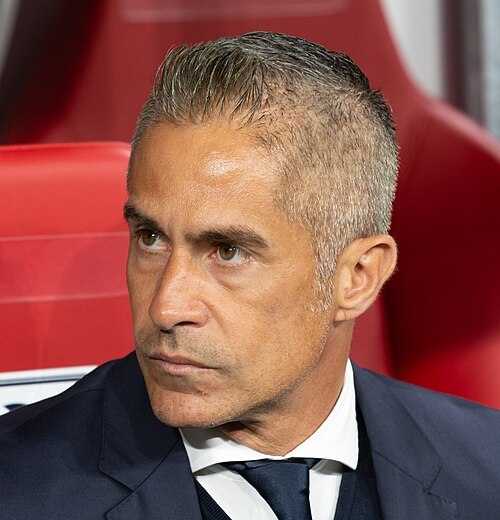
Image licensed under CC BY-SA 4.0? by Steffen Prößdorf
12th April 1924 🗓️ : Birth - Curtis Turner
Curtis Turner, American race car driver (d. 1970)
"Curtis Morton Turner (April 12, 1924 – October 4, 1970) was an American stock car racer who won 17 NASCAR Grand National Division races and 38 NASCAR Convertible Division races. Throughout his life, he developed a reputation for drinking and partying. He also fought to form a drivers union, which..."

Image licensed under CC BY 2.0? by Freewheeling Daredevil
12th April 1823 🗓️ : Birth - Alexander Ostrovsky
Alexander Ostrovsky, Russian playwright and translator (d. 1886)
"Alexander Nikolayevich Ostrovsky (Russian: Алекса́ндр Никола́евич Остро́вский; 12 April [O.S. 31 March] 1823 – 14 June [O.S. 2 June] 1886) was a Russian playwright, generally considered the greatest representative of the Russian realistic period. The author of 47 original plays, Ostrovsky "almost..."

Image by Vasily Perov
12th April 🗓️ : Holiday - National Redemption Day (Liberia)
"The following are public holidays in Liberia...."
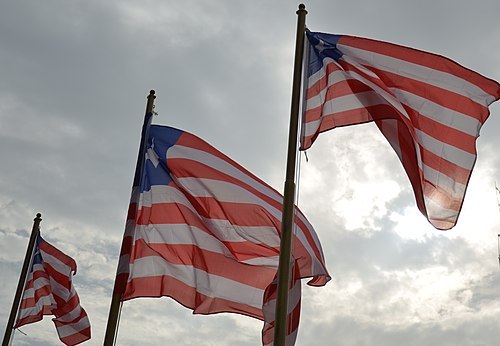
Image licensed under CC BY 3.0? by blk24ga
0 notes
Text

Sexual adventure
Like the Netherlands, prostitution is legal in Curaçao.
Near the airport is an adult resort called Campo Alegre (Happy Camp), a jaw-droppingly enormous brothel.
Because of the shape and color of the logo, locals discretely refer to the camp as "The Green Leaf.”
The $6 admission fee (they don't check identification) is so worth the adventure.
The sprawling open-air property was originally an army encampment.
And it has recently undergone considerable refurbishment: There's a sleek high-speed Internet cafe, a gift shop, a clothing boutique (that sells Falcon's Mike Branson dildos), a massage parlor, an S/M dungeon, a business center, a lounge bar and even a water fountain.
Campo Alegre is like a small town — with boulevards that guests can stroll through as they pass by the tiny 1940s cabins where the prostitutes live.
Except for a couple of restricted trips per week, the women are not permitted to leave, less they start independently cutting their own deals.
The employees keep in shape at the gym.
And after a sweaty workout, guests can watch them rinse off through the glass-walled shower stall.
Upon a recent visit, I was told that I had just missed the annual "community day" — where locals are invited to inspect Happy Camp and see how well maintained it is.
Apparently, parents are encouraged to bring the kids.
Corporate sponsorship is big at Campo Allegre.
Huge neon-lit beer signs arch across the boulevards.
But my Dallas civic pride burst with joy when I stumbled across gigantic meticulously tiled Coca-Cola logo.
In case y'all didn’t know, the first batch of Coke ever bottled came from Deep Ellum in 1902.
As I looked at the cabin directly in front of the Coke logo, an enormous dildo proudly stood inside the windowsill.
The vibe at Campo Allegre is strictly hetero.
However, during the Wednesday night strip shows, the johns apparently get a little frisky and the men are known to cruise each other — however, the down-low scene there appears way too dangerous for a tourist to dare attempt.
Original Site of the Coca-Cola Bottling Company of Dallas
One of the first companies in the nation granted franchise rights for the distribution of Coca-Cola in bottles, the Coca-Cola Bottling Company of Dallas produced the city's first bottle of Coca-Cola on this site on June 10, 1902.
J.T. Lupton of Chattanooga, Tennessee, was the principal owner, with an initial investment of $5,000.
Three employees handled the entire operation. They were: R.D. Twinam, company manager; Mr. Dixon, the bookkeeper; and Fred Welsh, who operated the bottling machine.
The employees sold 37 cases on the first day of production and delivered them in a one-horse wagon.
In the bottling process, glass Coca-Cola bottles were filled by using a hand-operated, foot-powered machine that held two bottles, one beneath the syrup and the other under the filling head for the carbonated water, where the bottles also were capped.
Bottles were reused and had to be hand-washed by putting cleaning fluid and steel pellets, similar to gunshot, into the bottles and shaking them vigorously.
By 1905, sales of Coca-Cola had increased such that the company moved the bottling plant to 1800 Wood Street.
From its small beginnings here in Deep Ellum, the Coca-Cola Bottling Company of Dallas, later renamed the Coca-Cola Bottling Company of North Texas, grew to more than 2,600 employees in 19 locations by its centennial in Dallas in 2002. (2002)
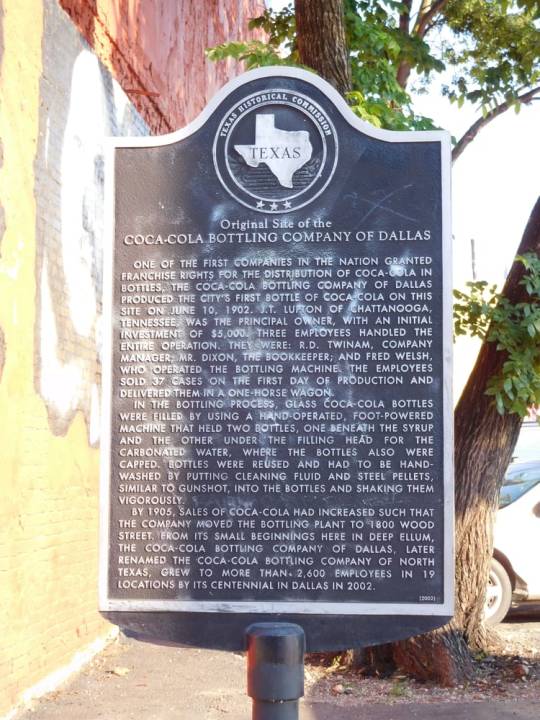
The Universal Drink
How Coca-Cola came to rule the world.
In the fizzy world of carbonated beverages, today marked a notable anniversary.
On May 8, 1886, a pharmacist in Georgia named John Pemberton sold the first glass of Coca-Cola, inaugurating what is arguably the most successful product in history.
According to the beverage maker, Pemberton sold nine servings per day during the soft drink’s first year; by the time The New Yorker’s E. J. Kahn wrote about it, in 1959, that number had soared to forty thousand servings every minute.
European royalty drank it; so had Hitler.
The Ethiopian Emperor Haile Selassie imported special deliveries on his imperial plane—or he did, that is, until a bottling plant opened in Addis Ababa.
Despite the company’s astonishing rise, the quintessentially American creation was not without detractors.
Critics across the political spectrum derided Coke’s sweeping expansion, identifying “a new type of imperialism” in the form of “Coca-Colonialism.”
The Second World War had played a major role in the company’s global spread, but the Cold War was proving a serious obstacle.
(Although the Iron Curtain had a few cracks: Soviet-bloc athletes guzzled more Coke than anyone else at the 1956 Olympics, in Australia.)
At the end of the article, Kahn jokes that Coca-Cola might prove the key to global peace—a prophecy that didn’t come to pass, unfortunately, but one that did anticipate the company’s iconic “I’d Like to Buy the World a Coke” ad campaign, which launched a little more than a decade later.
0 notes
Text
#J905 Maestro Arturo Toscanini
We excerpted his bio from the times book review. Click on title to read it in its entirety.
It all began in Rio
On the night of June 30, 1886, Arturo Toscanini — recently turned 19 — arrived, barely on time, at the imperial opera house in Rio de Janeiro, was to perform “Aida.” Pandemonium. The unpopular lead conductor had resigned in a huff; the audience shouted his unpopular replacement off…

View On WordPress
0 notes
Photo



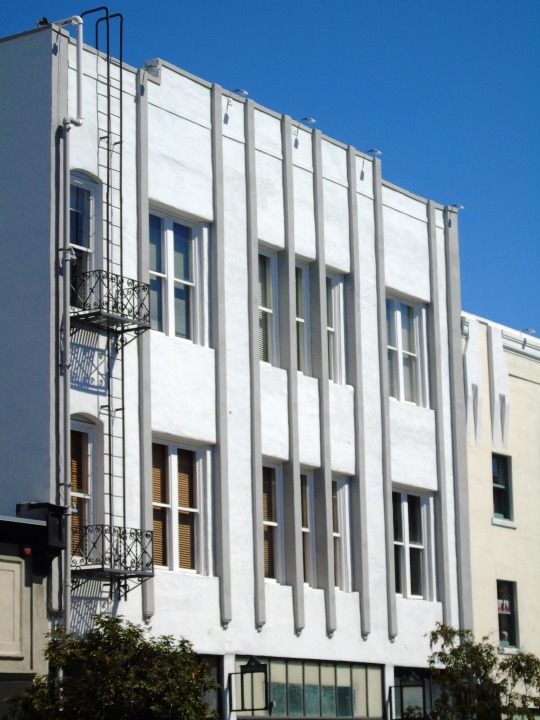


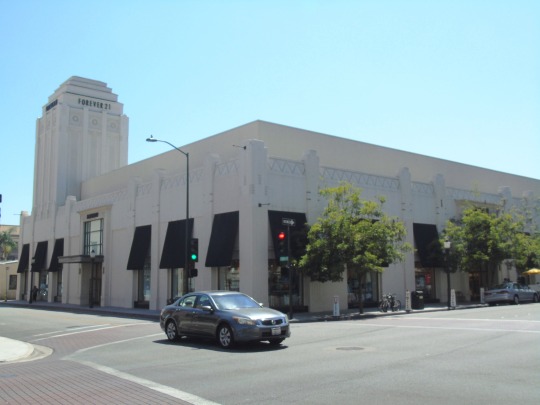



Pasadena was incorporated on June 19, 1886.
#Vandervort Building#The Dodsworth#Central Park#Edison El Rey Building#Hotel Green#Perm Oil Building#Pasadena#incorporated#19 June 1886#anniversary#US history#original photography#summer 2017#vacation#travel#street scene#West Coast#California#tourist attraction#landmark#architecture#cityscape
1 note
·
View note
Text

"Lord Bessborough rend honneur aux Victoria Rifles," La Presse. June 19, 1933. Page 13.
----
Le gouverneur général pose la première pierre de leur nouvel arsenal.
Belle cérémonie
---
En présence d'une fort belle assistance militaire et civile, S. E. le comte de Bessborough, gouverneur général du Canada, a scellé samedi après-midi la pierre angulaire du nouvel arsenal des Victoria Rifles rue Cathcart, près de la rue Université, arsenal qui va doter ce grand régiment d'un établissement digne de ses fastes car jusqu'ici il ne possédait qu'un arsenal fort rudimentaire.
D’ailleurs le lieutenant-colonel Stuart-A. Rolland, commandant du régiment, en souhaitant la bienvenue au représentant de Sa Majesté, souligna cet état de choses et indiqua comment les Vics ont dû se contenter jusqu'à maintenant d'un arsenal tout à fait insuffisant et ce depuis nombre d'années.
Malgré la pluie qui commença de tomber peu après l'arrivée du gouverneur général revenu en train special de Shawbridge où il s’était rendu le cérémonie se déroula en présence d'une grande foule.
Le scellage de la pierre
Une garde d'honneur de cent hommes, en grand uniforme, cet élégant uniforme vert, avec le bonnet de police en astrakan, que portent les Victoria Rifles, sous le commandement du major I.-H. Eakin, assisté du lieutenant M.-M. Allan et du second lieutenant C.-P. Decary, massée dans la rue Cathcart, face à l'édifice en construction, ajoutait au pittoresque de la manifestation que le cinéma et la photographie prirent sous tous les angles.
Le gouverneur général passa en revue la garde d'honneur et après avoir serre in main au lieutenant-colonel Rolland, se rangea à la tête des invités d'honneur au nombre de plus d'une centaine.
Après les quelques mots de présentation du lieutenant-colonel Rolland, qui remercia aussi le ministère de la défense nationale, le gouverneur général procéda au scellage de la pierre angulaire.
Le passé et l'avenir des Victoria Rifles
Le gouverneur général, avant deprendre la truelle d'argent que lui présentait le lieutenant-colonel Rolland, prononça une courte allocution au cours de laquelle il rappela surtout les services rendus par les Victoria Rifles à l'empire britannique et affirma sa conviction que leur nouvel arsenal permettrait des hauts faits encore plus glorieux que jadis.
Immédiatement après le scellage de la pierre, l'évêque J.-C. Farthing la bénit avec tout le cérémonial d'usage.
Parmi l'assistance nombreuse, on connaissait sir Arthur Currie, le major general A.-C.-L. McNaughton, chef d'état-major; le brigadier général W-W-P. Gibsone; le brigadier général E. de B. Panel, le brigadier général T.-L. Tremblay, de Québec; le brigadier général John-A. Gunn, de Toronto; et le lieutenant-colonel Birtwhistle, d'Ottawa.
Le nouvel arsenal est construit sur l'emplacement de l'ancien arsenal érige en 1886 et devrait être terminé en décembre prochain.
Caption:
Appelé à sceller la pierre angulaire du nouvel arsenal des Victoria Rifles, rue Cathcart près de la rue Université, S. E. le comte de Bessborough, gouverneur général du Canada, a rendu hommage, samedi dernier, an dévouement et au courage des "Vics", en présence d'une grande assis tance civile et militaire. En haut, l'on voit le gouverneur général passant en revue la tarde d'honneur, sous le commandement du major L.-H. Eakin. En bas, lord Bessborough sourit aux photographes tout en maniant la truelle d'argent avec laquelle il scella la pierre angulaire du nouvel édifice. (Cliches la Presse)
#montreal#victoria rifles of canada#canadian militia#arsenal#military arsenal#cornerstone laying#governor general of canada#opening ceremony#lord bessborough#canadian army#great depression in canada
0 notes
Text
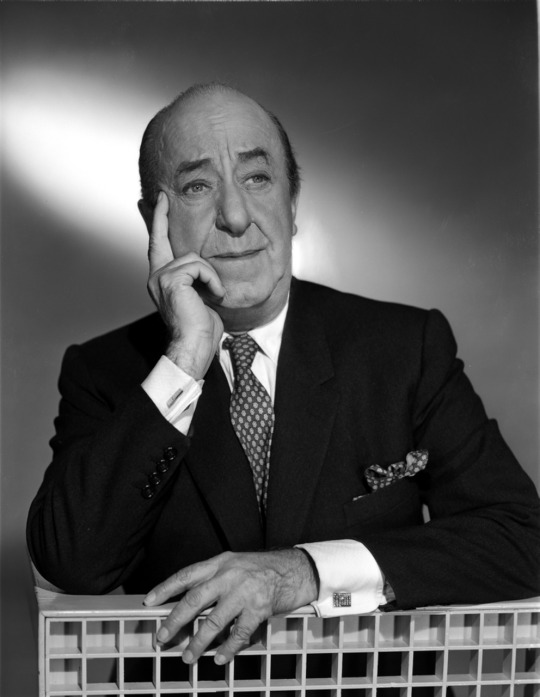
Ed Wynn (November 9, 1886 – June 19, 1966)
18 notes
·
View notes
Text
1966-Ed Wynn

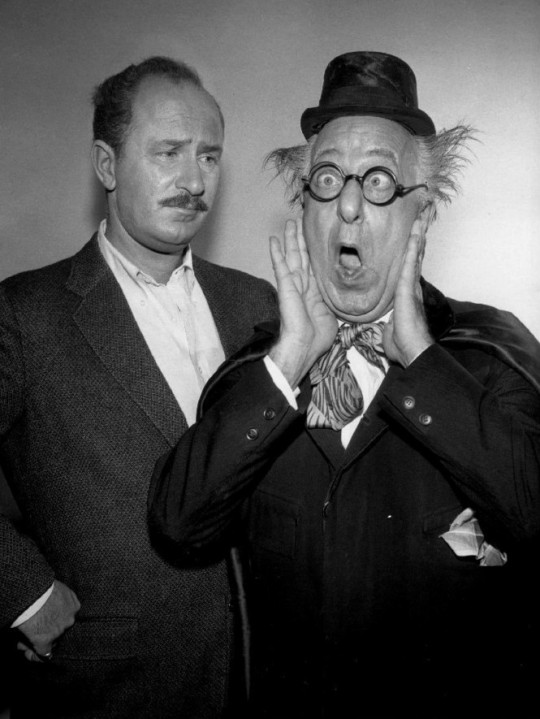

Isaiah Edwin Leopold (November 9, 1886 – June 19, 1966), better known as Ed Wynn, was an American actor and comedian. He was noted for his Perfect Fool comedy character, his pioneering radio show of the 1930s, and his later career as a dramatic actor.
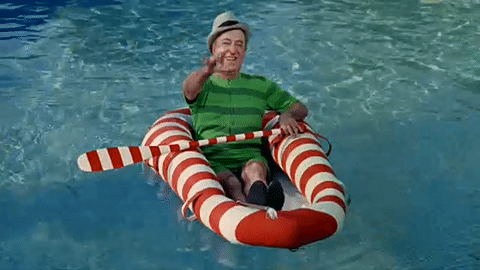
0 notes
Text
History
June 18
June 18, 1812 - After much debate, the U.S. Senate voted 19 to 13 in favor of a declaration of war against Great Britain, prompted by Britain's violation of America's rights on the high seas and British incitement of Indian warfare on the Western frontier. The next day, President James Madison officially proclaimed the U.S. to be in a state of war. The War of 1812 lasted over two years and ended with the signing of the Treaty of Ghent in Belgium on December 24, 1814.
June 18, 1815 - On the fields near Waterloo in central Belgium, 72,000 French troops, led by Napoleon, suffered a crushing military defeat from a combined Allied army of 113,000 British, Dutch, Belgian, and Prussian troops. Thus ended 23 years of warfare between France and the other powers of Europe. Napoleon was then sent into exile on the island of St. Helena off the coast of Africa. On May 5, 1821, the former vain-glorious Emperor died alone on the tiny island, abandoned by everyone.
June 18, 1983 - Dr. Sally Ride, a 32-year-old physicist and pilot, became the first American woman in space, beginning a six-day mission aboard the space shuttle Challenger, launched from Cape Canaveral, Florida.
Birthday - British explorer George Mallory (1886-1924) was born in Mobberley, Cheshire, England. When asked why he wanted to climb Mount Everest, the highest mountain in the world, he simply answered, "Because it is there." He disappeared while climbing through the mists toward its summit on the morning of June 8, 1924. His body, perfectly preserved due to the cold conditions, was discovered by climbers in 1999, just 600 meters (2,030 feet) from the summit.
0 notes
Text
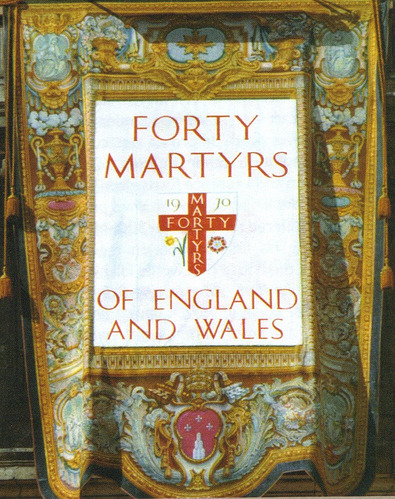
SAINTS OF THE DAY FOR MAY 04
Bl. Carthusian Martyrs, 1540 A.D. English monks of the Carthusian Order put to death by King Henry VIII because of their continued allegiance to the pope and the authority of the Holy See. These martyrs, eighteen in all, were beatified in 1886.
St. Augustine Webster, 1535 A.D. One of the Forty Martyrs of England and Wales canonized in 1970. Augustine was a Carthusian prior of the Charterhouse at Axholme, England. He was arrested in London and martyred at Tyburn.
St. John Houghton, 1535 A.D. Protomartyr of the English Reformation. A native of Essex, he served as a parish priest after graduating from Cambridge. He then became a Carthusian and the prior of the Carthusian Charterhouse of London. As an opponent of King Henry VIII’s Acts of Succession and Supremacy, he was arrested with other Carthusian but was released temporarily. He then refused to swear to the Oath of Supremacy, the first man to make this refusal. Dragged through the streets, he was executed at Tyburn with four companions by being hanged, drawn, and quartered. Parts of his remains were put on display in assorted spots throughout London. Pope Paul VI canonized him in 1970 as one of the Forty Martyrs of England and Wales.
St. John Payne, 1582 A.D. Also John Paine. An English martyr. Payne was born at Peterborough, England, and was possibly a convert. In 1574, he departed England and went to Douai, where he was ordained in 1576. Immediately thereafter, he was sent back to England with St. Cuthbert Mayne. His labors met with considerable success, but he was arrested within a year. Released by English authorities, he departed the island but came back in 1579. While staying in Warwickshire on the estate of one Lady Petre, he was arrested once more after being denounced by John Eliot, a known murderer who made a career out of denouncing Catholics and priests for bounty. Imprisoned and tortured in the Tower of London for nine months, he was finally condemned to death and hanged, drawn, and quartered at Chelmsford. He is one of the Martyrs of England and Wales canonized by Pope Paul VI in 1970.
St. Richard Reynolds, 1169 A.D. Brigettine martyr of England and one of the Forty Martyrs of England and Wales. He was born in Devon, England, in 1492 and was educated at Cambridge. In 1513, he entered the Brigettines at Syon Abbey, Isleworth. When King Henry VIII demanded royal oaths, Richard and others opposed the monarch. They were executed at Tyburn. Richard was canonized in 1970.
St. Robert Lawrence, 1535 A.D. One of the Forty Martyrs of England and Wales. After joining the Carthusians, he served as prior of the Charterhouse at Beauvale, Nottinghamshire, at the time when King Henry VIII of England broke with Rome and launched the Dissolution of the Monasteries. Robert went with St. John Houghton to see Thomas Cromwell, who had them arrested and placed in the Tower of London. When they refused to sign the Oath of Supremacy, they were cruelly tortured and executed at Tyburn, making them among the first martyrs from the order in England. Beatified in 1886, Robert was canonized by Pope Paul VI with the other martyrs in 1970.
The Forty Martyrs of England and Wales. A famed group of Catholic martyrs who were put to death for the faith and who received canonization on October 25, 1970, by Pope Paul VI. The saints belonging to this group are covered in individual entries, but the members are: Alban Roe (January 21), Alexander Bryant (December 1), Ambrose Barlow (September 11), Anne Line (February 27), Augustine Webster (May 4), Cuthbert Mayne (November 29), David Lewis (August 27), Edmund Arrowsmith (August 28), Edmund Campion (December 1), Edmund Gennings (December 10), Henry Morse (February 1), Henry Walpole (April 7), John Almond (December 5), John Boste (July24), John Houghton (May 4), John Jones (July 12), John Kemble (August 22), John Lloyd (July 22), John Payne (April 2), John Plessington (July 19), John Rigby (June 19), John Roberts (December 9), John Stone (May 12), John Southworth (June 27), John Wall (August 22), Luke Kirby (May 30), Margaret Clitherow (October 21), Margaret Ward (August 30), Nicholas Owen (March 2), Philip Evans (July 22), Philip Howard (October 19), Polydore Plasden (December 10), Ralph Sherwin (December 1), Richard Gwyn (October 17), Richard Reynolds (May 4), Robert Lawrence (May 4), Robert Southwell (February 21), Swithun Wells (December 10), and Thomas Garnet (June 26).
The Eighty-five Martyrs of England and Wales are a group of men who were executed on charges of treason and related offences in the Kingdom of England between 1584 and 1679. They are considered martyrs in the Roman Catholic Church and were beatified on 22 November 1987 by Pope John Paul II. Feastday May 4
ST. ANTONINA OF NICEA, MARTYR, saint Antonina, martyr, who was cruelly tortured and tormented with various tortures, three days hanging, then imprisoned for two years and, finally, under Governor Prisciliano, and by the confession of his faith in God, was burned alive. May 4
St. Florian, was an officer of the Roman army, who occupied a high administrative post in Noricum, now part of Austria, and who suffered death for the Faith in the days of Diocletian. His legendary "Acts" state that he gave himself up at Lorch to the soldiers of Aquilinus, the governor, when they were rounding up the Christians, and after making a bold confession, he was twice scourged, half-flayed alive, set on fire, and finally thrown into the river Enns with a stone around his neck. Feastday May 4
St. Conleth, 519 A.D. Irish metalworker and hermit, also called Conlaed. He lived as a recluse at Old Connell on the Liffey, and was a close friend of St. Brigid. In time he served as spiritual director of St. Brigid’s convent at Kildare. A copyist and skilled illuminator of manuscripts, he is noted for the crozier that he fashioned for St. Finbar of Termon Barry.
St. Ethelred. King of Mercia who resigned his throne to become a Benedictine monk at Bardney, England. He became the abbot at Bardney.
0 notes